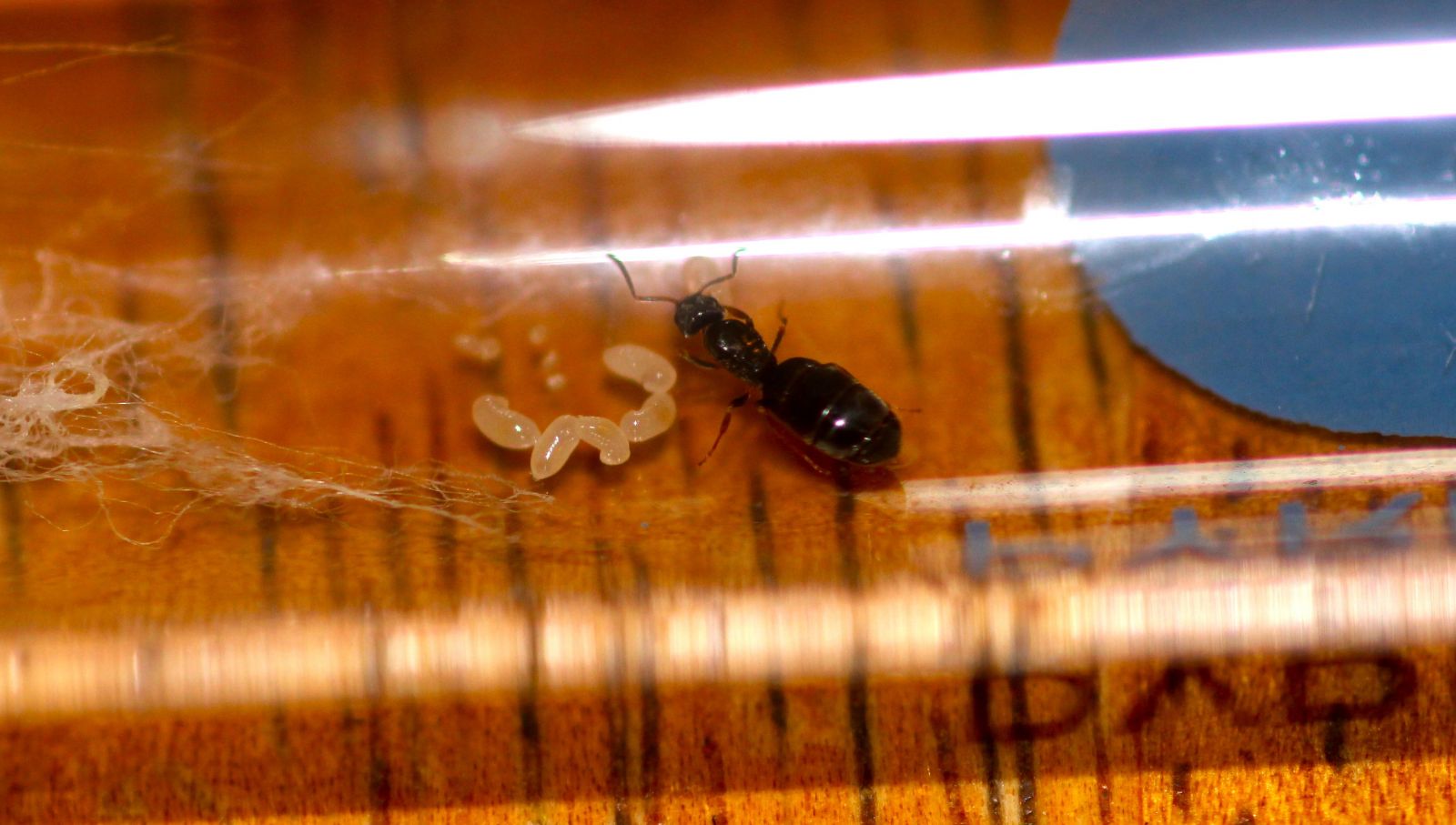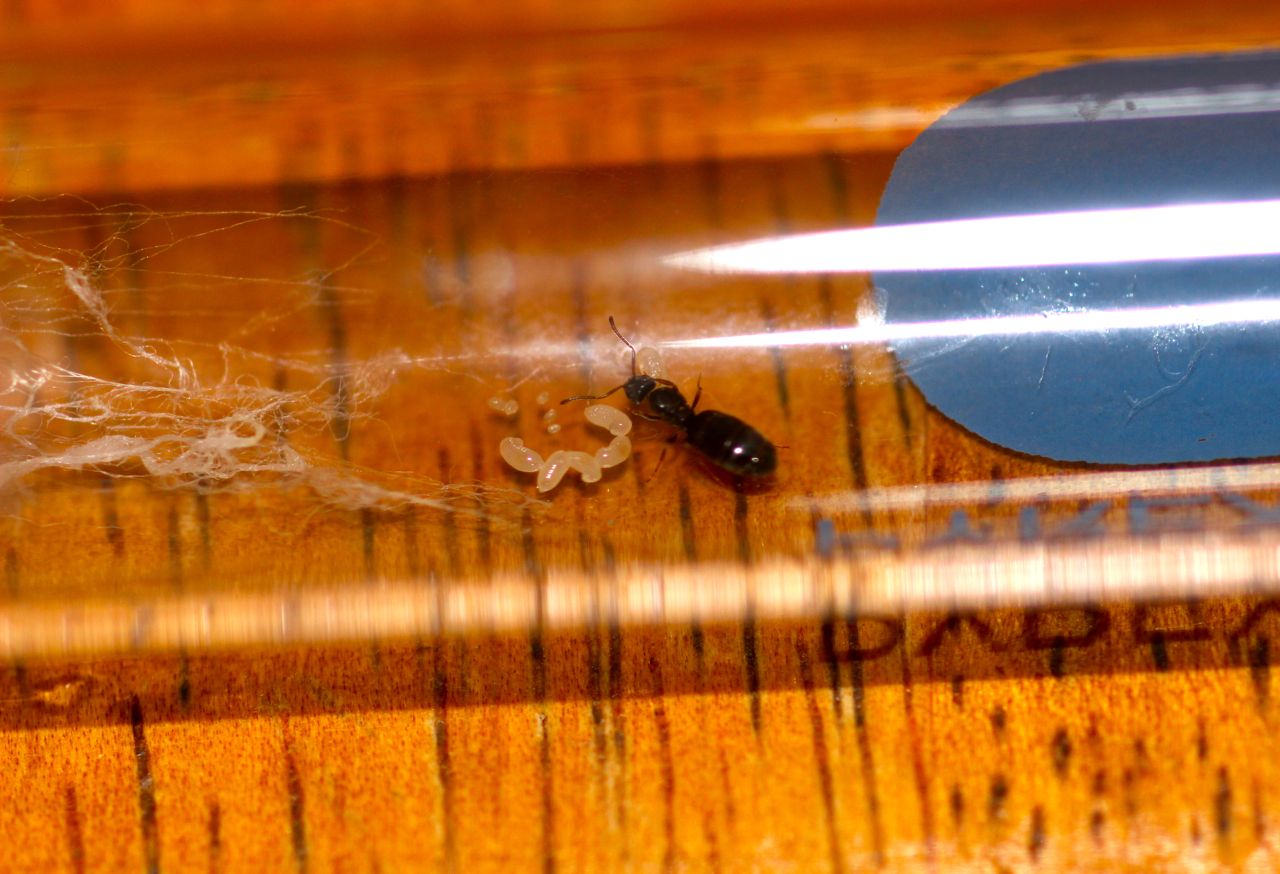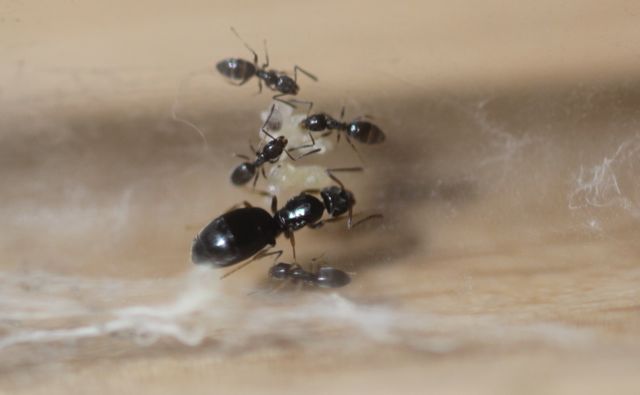This journal will document the development of my captive Tapinoma sessile colony.
I found a single Tapinoma sessile queen alone beneath a rock on a wooded trail in Loveland, CO on July 13, 2014. The area had a high concentration of Tapinoma sessile colonies - in fact, T. sessile seemed to be the most dominant species by far. The trail was at the edge of a lake and had predominantly sandy/soggy soil. The collected queen laid eggs shortly after settling down in a traditional test tube setup. Now, she has what seem to be three large pre-pupae and a few small larvae. It looks as if the first workers will be larger than I expected, compared to the queen’s tiny body size. I probably won't take any photos until the workers eclose, since I don't want to disrupt the founding process.
I'm interested to see whether this colony will eventually become polygynous, considering that intranidal mating is supposed to be common in T. sessile.
Edited by Myrmicinae, August 15 2014 - 7:27 PM.






















